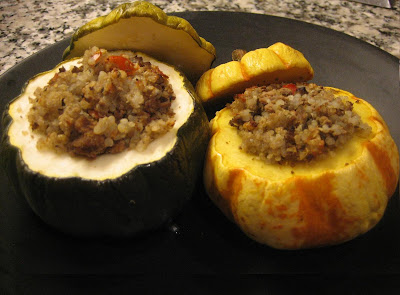
My favorite way to cook to wild salmon is to slow cook it - this is by far, the most moist, tender version of salmon I've ever had! It's also really easy to make, and you just pop it into the oven and let the oven do all the work. This salmon is so delicious, it doesn't even really need any fancy sauces or toppings; it's wonderful just by itself with some olive oil drizzled on top and good ol' salt and pepper. You don't want to overwhelm the beautiful flavor of wild salmon, so if you do make a topping, you want to go easy!
Here are some ideas for salmon flavorings:
-add honey or fresh fruit for some sweetness: honey, turmeric, and powdered fennel seed is a possibility, or you could go for a tropical fruit salsa with finely diced mango, strawberries, pineapple, tomato, and apple (or whatever fresh fruits are in season; a great summertime version would be avocado, peach, and plum), a dash of salt and pepper, and freshly squeezed lime juice.
-a bit of spiciness: chili powder or cayenne
-a savory herb topping: shallots and fresh chiffonade basil (a personal favorite)
-a citrus topping: fresh dill and freshly squeezed lemon, for example
-a crunchy topping: brown rice cereal, crushed almonds or other nuts, etc
-aioli (a garlic-infused mayonnaise): to be spread on the salmon after it is done cooking
In the pictured version, I went with wild king salmon seasoned with salt and pepper, and a bit of olive oil drizzled on top with a side of tomatoes, green beans, and brown rice. However, other types of salmon are delicious too. Here is a summary of the different wild salmon types I've tried: Alaskan king (Chinook) salmon has a firm flesh, a red color, and are high in oil content, resulting in an extra-rich flavor, which is highly prized among salmon-lovers. I've also tried Copper River king salmon, which was absolutely delicious but ridiculously expensive. Sockeye (red) salmon also has a rich flavor due to its high concentration of oils and a rich red, firm flesh that maintains its color throughout cooking, as you can see in the photo. Coho (silver) salmon has a mild and sweet taste, slightly milder than that of the Sockeye, and the flesh is leaner, firmer, and has a more delicate texture than other salmon. Steelhead Trout (which is technically a type of Rainbow Trout, rather than a type of salmon, but is so similar in color, taste and texture to salmon that it is often categorized as salmon) has a tender flesh and a mild, somewhat nutty flavor. I personally tend to prefer the oilier, richer-tasting types of salmon.
| Slow-Cooked Wild King Salmon with Shallots-Basil Topping Adapted from Alice Waters' Chez Panisse Café Cookbook Ingredients: • 1 king salmon fillet, 0.3-0.4 lb • extra-virgin olive oil • salt • pepper • for the salmon topping: finely sliced shallots and fresh chiffonade basil (chiffonade means "to shred", where you slice an herb into long, thin strips), or any other topping you prefer Directions: 1. Preheat the oven to 250°F, and place a pan of water on the lowest rack in the oven, which will create a humid environment to keep the salmon moist. 2. Lightly brush or spray a baking pan with olive oil, or alternatively, wrap a baking pan with aluminum foil (good for you lazy dish washers...) Brush the salmon with olive oil and season generously with salt and freshly ground pepper and place the topping of your choice on the salmon. Place the salmon in the baking dish and put it in the oven for about 30 min. The salmon is cooked when the juices are beginning to collect on top of the fillet and fat is starting to ooze out of its sides; the color was remain essentially the same, so don't judge by the color! 3. Let the salmon rest for at least 10 min at room temperature. |













